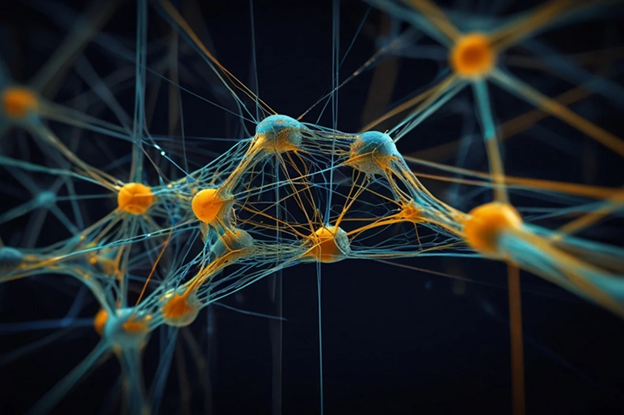Category: Reasoning

The Symphony of Thought: The Harmonious Complexity of a New Neural Network
Introduction For years, we’ve been captivated by the power of neural networks, marveling at their ability to identify cats in photos, translate languages, and even generate art. But what if…

Do Cognitive Functions Vary Among Individuals?
The Unique Tapestry of Thought: We all perceive the world, remember experiences, and make decisions. These core abilities, often referred to as cognitive functions, are the very fabric of our…

Beyond Communication: The Cognitive Functions of Language
Introduction Language is not only a means of communication but also plays a crucial role in cognitive functions—how we think, perceive, and interact with the world. Cognitive functions of language…

Causatives: A Linguistic Exploration of Cause & Effect
Introduction Human understanding of the world is deeply intertwined with the concept of cause and effect. We constantly perceive actions leading to outcomes, and language provides us with the tools…

Brain Reaction to Feedbacks: Neurological and Psychological Perspectives
Introduction Feedback is an essential aspect of human communication, learning, and development. It is a powerful tool that shapes our behaviour, actions, and decisions. The way the human brain reacts…

From Goal Formulation to Execution: How Human beings Plan Tasks
Introduction Understanding how humans plan tasks is fundamental to comprehending goal-directed behaviour, problem-solving, and decision-making. Task planning is a complex cognitive process involving multiple stages, from defining a desired outcome…

Arabic Software Localization Challenging Issues
Introduction Localization is the creation of software application that adapts to many locales worldwide. A locale is a collection of language-related user preferences specified by pairing a language and a…

Sentiment Analysis: An Overview
Introduction Sentiment analysis is a computational approach that enables machines to interpret and classify the emotional expressions within textual data. The primary goal of sentiment analysis is to determine the…

Google Maps Enhances User Experience with Natural Language Processing
Introduction In an age where technology increasingly aims to enhance user experience, Google Maps stands out by integrating natural language processing (NLP) into its services. This revolutionary approach not only…

Understanding the Translation Market: Trends and Challenges
Abstract: The translation market is a dynamic and rapidly evolving sector driven by globalization, technological advancements, and the increasing demand for multilingual content. This paper explores the key trends shaping…

Causative-constructions-in-arabic-language
Introduction In Classical Arabic and Modern Standard Arabic (MSA), causative constructions are typically formed by using Form II (الفعل المزيد فيه بالهمزة) of the verb. This form is derived from…

Part-of-speech Tagset for Arabic
Introduction Modern Standard Arabic grammar defines a detailed part-of-speech hierarchy which is applied to words and morphological segments both. Fundamentally, a word may be classified as a nominal ism (اسم), verb fiʿil (فعل) or…
Can Robots Emulate Human Brains
Introduction The question of whether robots can emulate human brains brings forth myriad discussions spanning neuroscience, artificial intelligence, robotics, and philosophy. While technological advancements have led to significant improvements in…
Linked Data and the Internet of Things: Bridging the Gap Between Physical and Digital
Introduction The Internet of Things (IoT) promises a future brimming with interconnected devices, generating a torrent of data from every corner of our lives. From smart homes and wearable technology…
The Future is Fluid: Language Models Poised to Reshape Human-AI Collaboration
San Francisco, CA – Language models, the powerful AI engines behind everything from chatbots to content creation tools, are rapidly evolving, promising to fundamentally change how humans and artificial intelligence collaborate….
Follow Us
Recent Posts
Tags
Artificial Intelligence Attention Audio Data Annotation Clustering Cognitive Cognitive Orchestra Cognitive Processes Communication Content Tagging Data Tagging Digital Marketing Framework Gestural Language Grammatical Conventions Interpretation Language Framework Language Processing Memory Multi-Modal Data NLP Product Labelling Reasoning SEO Performance Structure Supervised Learning Symphony of Thought Syntactic Analysis Syntactic Dependencies Syntax understanding
















